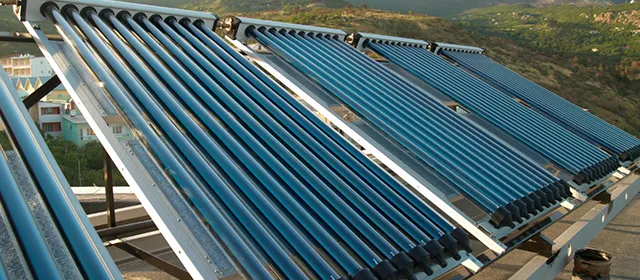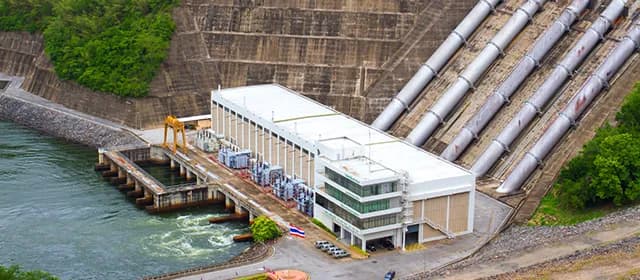Tubular solar collectors represent a critical technology within solar thermal systems, especially where heat retention and efficiency under low insolation conditions matter. This article examines supply chain dynamics, manufacturing trends, and strategic challenges shaping the tubular collector sector. Emphasis lies on key raw materials, logistics risk, technological innovation, and competitive positioning of manufacturers.
How Advanced Tubular Solar Collector Designs Drive Demand and Efficiency
Tubular solar collectors typically adopt evacuated tubes or U-tube designs to reduce convective and conductive heat losses. The U.S. Energy Information Administration categorizes solar thermal collectors into concentrating and non-concentrating types; tubular collectors fall into the non-concentrating class used for water heating or space heating in buildings. Their ability to operate under colder ambient conditions or partial shading conditions gives them an advantage in many geographies. Demand arises from residential hot water systems, commercial heating, and industrial heat applications.
Global trends indicate accelerating growth in the tubular solar collector market. The global tubular solar collector market size is projected to grow from USD 5,724.1 million in 2024 to USD 8,394.2 million by 2031, exhibiting a CAGR of 5.62% over the forecast period. Within that space, tubular collector deployments gain traction where enhanced efficiency and heat retention justify higher unit costs relative to flat plate collectors.
Critical Supply Chain Dependencies and Upstream Risks in Tubular Solar Collector Manufacturing
Manufacturing tubular collectors requires specialized glass tubing, vacuum pumps for evacuation, selective coatings, copper or aluminum heat exchange elements, and support framing materials such as stainless steel or aluminum. Glass tubing demand competes with other sectors such as electronics and high-precision optics, making supply tight when global glass or specialty tubing producers face constraints. Vacuum coating facilities capable of depositing durable absorber coatings represent another bottleneck.
Selective coating technologies also evolve. Recent research in nanoparticle-pigmented selective coatings for high temperature applications has shown >94 percent solar absorption efficiency at 750 °C in test settings (Source: arxiv.org). Integration of such advanced coatings into industrial-scale production may require retooling of coating lines and process validation.
Logistics pose further risk, especially for long, fragile evacuated tubes. Shipment damage rates escalate when tubes experience shock or vibration. Cross-border trade disruptions, port congestion, or raw material tariff policies can elongate lead times. Vertical integration or regional manufacturing alleviates such risks but demands capital investment.
Emerging Manufacturing Techniques and Automation Trends Shaping Tubular Collector Production
Automation in handling and assembly of evacuated tubes has gained priority. Robotic loading of tubes into vacuum shells, automated vacuum sealing stations, and inline leak detection systems enhance throughput and quality consistency. Some firms invest in modular factory design to permit scaling. Integrating sensors into tube arrays to monitor temperature profiles and detect failure enables predictive maintenance and higher warranty confidence.
Materials substitution also sees experimentation. Nanofluid heat transfer media within tubes have drawn research attention for improving absorption and thermal transfer beyond traditional water or glycol media. Adoption at commercial scale is nascent, constrained by stability, cost, and long-term reliability concerns.
Existing manufacturers also embed lifecycle considerations early. End-of-life management of solar equipment, especially when collectors degrade after 20+ years, becomes relevant. Regulatory frameworks such as those enforced by the U.S. Environmental Protection Agency for end-of-life solar panel waste set precedents for robust recycling policies (Source: www.epa.gov). Although those rules focus on PV modules, solar thermal producers may adopt proactive recycling frameworks to mitigate environmental risk.
Supply Chain Mapping: Tiers and Dependencies
Tier-1 entities in the tubular collector supply chain include glass tube manufacturers, vacuum pump and coating system producers, and absorber coating technology providers. Tier-2 suppliers deliver raw glass feedstock, high-purity gases, specialty chemicals for coating baths, and structural materials. Downstream, integrators and system installers tie collector modules into heat exchange systems or building infrastructure.
Dependency concentration exists in regions where precision glass or coating capacity dominates. Any production disruption in those nodes cascades across the flow. Hedging strategies include multi-sourcing, local capacity development, or fallback designs using slightly lower performance coatings to maintain supply continuity.
Competitive Landscape and Case Study
Among manufacturers, Schott AG remains a key player in glass tubing and solar glass technologies supporting evacuated tube solar systems. Their capacity and technical expertise in glass manufacture undergird many downstream collector producers. In China, multiple firms produce tubular collector systems; some integrate glass, assembly, and coatings in one facility to reduce interdependency risk.
In May 2025, Epicor announced the addition of a “Carbon Cost Rollup” feature within its ERP suite Kinetic to treat CO₂ equivalent as a cost element, enabling manufacturers to incorporate carbon accounting in production processes (Source: www.epicor.com). Such tools help firms monitor emissions embedded in raw material sourcing, energy consumption in vacuum lines, and logistics, thereby optimizing process selection and supplier evaluation.
In large solar thermal plants, flow allocation methodologies increasingly matter. An auction-based flow allocation algorithm combining artificial neural network techniques has been deployed in operational concentrating solar plants to optimize thermal distribution and reduce losses. Although that method pertains to parabolic trough systems, analogous optimization can inform fluid routing and thermal balancing in large tubular collector arrays.
Regional Dynamics and Localization
In the Asia Pacific, particularly China and India, energy demand growth and supportive solar policies drive local demand for tubular collectors. Local manufacturing reduces logistics costs, enables faster deployment, and insulates from import tariffs. In Europe, stringent energy efficiency standards and carbon constraints encourage the adoption of high-performance tubular systems, pushing local manufacturers toward advanced coating and manufacturing precision.
North America faces constraints in scale subsidies and manufacturing investment. Strategic incentives or grants could encourage localized fabrication of critical components like glass tubes or vacuum coating lines.
Challenges, Mitigation Strategies, and Outlook
Scope 3 emissions from raw material supply chains present a hidden risk if suppliers source energy from carbon-intensive grids. Manufacturers must audit upstream emissions and favor low-carbon inputs. Dependent supplier concentration amplifies disruption risk if a single node fails. Development of redundancy or backstop designs becomes essential. Integration of advanced coatings or nanofluids carries technical risk and requires long test cycles to ensure durability under wide temperature cycles.
Forecasts suggest elevated demand for tubular collectors, but supply-side constraints or technological immaturity could impede growth. Stronger alignment between policy incentives, standardization of collector design, and industry consortia for shared supply nodes will strengthen resilience.
Conclusion
Supply chain dynamics and manufacturing trends in the tubular solar collector sector interweave raw material risk, process innovation, logistics complexity, and regional strategic positioning. Manufacturers investing in modular automation diversified sourcing, emissions accounting, and coating research stand in better stead to meet increasing demand.
Strategic partnerships that bridge glass manufacturing, coating providers and collector integrators can reduce dependency fragmentation. The path forward demands alignment among technology, supply chain resilience, and policy incentives to enable scalable deployment of tubular solar thermal systems.




